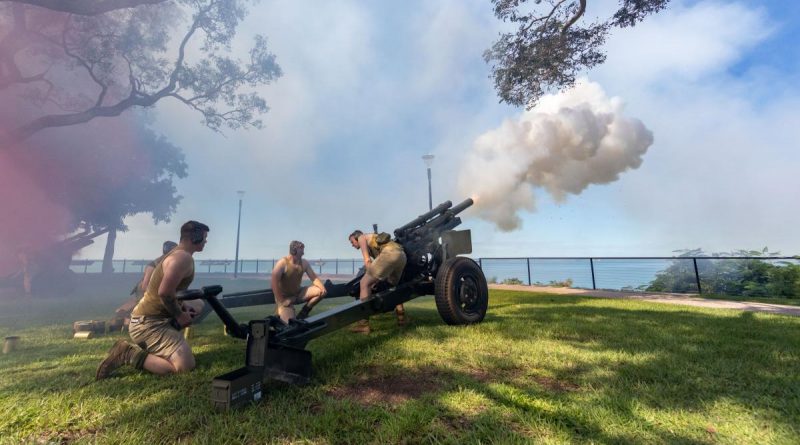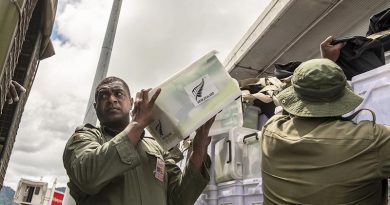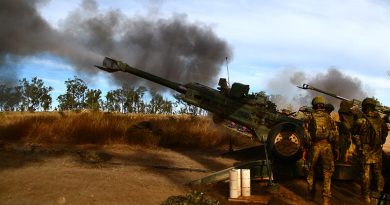The day WWII hit home

Ceremonies were held on February 19 to mark the 80th anniversary of the first attack on the Australian mainland.
CAPTION: Soldiers re-enact the Bombing of Darwin during an 80th anniversary commemorative ceremony in the Northern Territory. Story by Paul McAlonan. Photo by Leading Seaman Shane Cameron.
Shortly before 10am on Thursday, February 19, 1942, the first of two surprise Japanese air raids led to the sinking of a number of ships, decimating the allied air defence capability in Darwin, killing more than 240 people – more than half of them US personnel – and wounding up to 400, about 200 seriously.
The Japanese, concerned that the allied naval and air capabilities based in Darwin could pose a serious threat to their planned invasion of Timor on February 20, planned to neutralise this threat by launching an air attack with many similarities to the attack on Pearl Harbor only 10 weeks earlier.
The first raid began when 188 light bombers, dive bombers and fighters launched from four aircraft carriers began their attack, primarily targeting shipping and the harbour.
During the raid nine USN, RAN and merchant vessels were sunk, and major damage was caused to vital port facilities.
While the harbour was the focus of the 25-minute attack, the Japanese also strafed the civil and military airfields and barracks.
Some damage was also caused to civilian infrastructure, including a bomb which struck the post office killing the 10 staff.
While some US P40 fighters opposed the attack, all but one were quickly shot down and many more were destroyed on the ground.
As the city only had limited anti-aircraft (AA) defences, the attack was mainly unopposed.
The second raid, conducted by 54 land-based medium bombers launched from an air base on Ambon, began shortly before noon and again lasted about 25 minutes. The primary objective of this raid was the destruction of RAAF Base Darwin.
AA defence was provided by 14th and 2nd Australian heavy AA batteries, which were part of the small Army presence in the Northern Territory known as Darwin Fortress. The batteries were armed with 16 quick fire 3.7-inch guns and two 3-inch guns, with Lewis machine guns providing cover against low-flying aircraft.
The bombing of Darwin has been called Australia’s Pearl Harbor, because it had many similarities: the first raid was launched from the same aircraft carriers and conducted by many of the same crew; and a similar amount of ordnance was dropped with minimal opposition.
While the raid achieved its immediate tactical aim it failed strategically, as the allied presence and capability in Darwin was significantly increased as a result and it was to play a significant role in the defeat of the Japanese, even though it was bombed a further 63 times.

CAPTION: Veteran Brian Winspear lays a wreath during the service commemorating the 80th anniversary of the bombing of Darwin.
.
.

.
.





